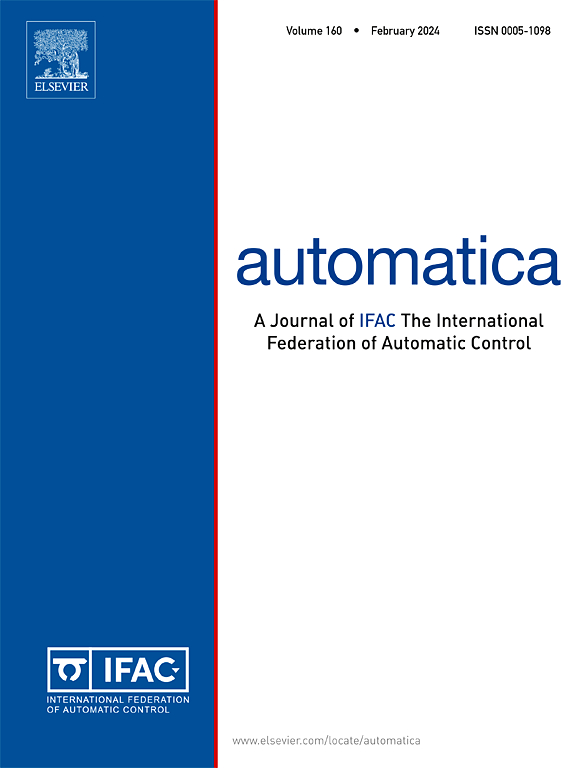OL-NE for LQ differential games: A Port-Controlled Hamiltonian system perspective and some computational strategies
IF 4.8
2区 计算机科学
Q1 AUTOMATION & CONTROL SYSTEMS
引用次数: 0
Abstract
Linear Quadratic differential games and their Open-Loop Nash Equilibrium (OL-NE) strategies are studied with a threefold objective. First, it is shown that the state/costate lifted system (arising from the application of Pontryagin’s Minimum Principle) is such that its behaviour restricted to the equilibrium subspace can be interpreted as the (non-power-preserving) interconnection of two cyclo-passive Port-Controlled Hamiltonian systems. Such PCH systems constitute the best response generators for each player, thus mimicking and extending the corresponding interpretation of (single-player) optimal control problems. Second, by realizing that the behaviour of the lifted dynamics off the equilibrium subspace is “irrelevant” for generating the equilibrium strategies, it is shown that such an invariant subspace can be rendered, via a suitably constructed virtual input, externally asymptotically stable while preserving the OL-NE. Finally, based on these premises we provide a closed-form gradient-descent method to solve the asymmetric coupled Riccati equations characterizing the OL-NE strategies.
LQ 微分博弈的 OL-NE:端口控制哈密尔顿系统视角和一些计算策略
研究线性二次微分博弈及其开环纳什均衡(OL-NE)策略有三重目的。首先,研究表明,状态/状态提升系统(源于庞特里亚金最小原则的应用)的行为局限于均衡子空间,可以解释为两个环被动端口控制哈密顿系统的(非保权)互连。这种 PCH 系统构成了每个玩家的最佳响应生成器,从而模仿并扩展了(单人)最优控制问题的相应解释。其次,通过认识到平衡子空间外的提升动力学行为与平衡策略的生成 "无关",我们证明了可以通过适当构造的虚拟输入,使这种不变子空间在外部渐近稳定,同时保持 OL-NE 。最后,基于这些前提,我们提供了一种闭式梯度下降方法,用于求解表征 OL-NE 策略的非对称耦合 Riccati 方程。
本文章由计算机程序翻译,如有差异,请以英文原文为准。
求助全文
约1分钟内获得全文
求助全文
来源期刊

Automatica
工程技术-工程:电子与电气
CiteScore
10.70
自引率
7.80%
发文量
617
审稿时长
5 months
期刊介绍:
Automatica is a leading archival publication in the field of systems and control. The field encompasses today a broad set of areas and topics, and is thriving not only within itself but also in terms of its impact on other fields, such as communications, computers, biology, energy and economics. Since its inception in 1963, Automatica has kept abreast with the evolution of the field over the years, and has emerged as a leading publication driving the trends in the field.
After being founded in 1963, Automatica became a journal of the International Federation of Automatic Control (IFAC) in 1969. It features a characteristic blend of theoretical and applied papers of archival, lasting value, reporting cutting edge research results by authors across the globe. It features articles in distinct categories, including regular, brief and survey papers, technical communiqués, correspondence items, as well as reviews on published books of interest to the readership. It occasionally publishes special issues on emerging new topics or established mature topics of interest to a broad audience.
Automatica solicits original high-quality contributions in all the categories listed above, and in all areas of systems and control interpreted in a broad sense and evolving constantly. They may be submitted directly to a subject editor or to the Editor-in-Chief if not sure about the subject area. Editorial procedures in place assure careful, fair, and prompt handling of all submitted articles. Accepted papers appear in the journal in the shortest time feasible given production time constraints.
 求助内容:
求助内容: 应助结果提醒方式:
应助结果提醒方式:


